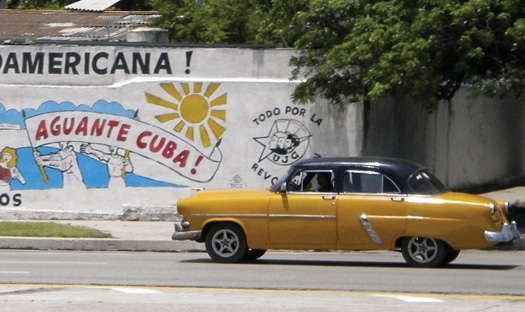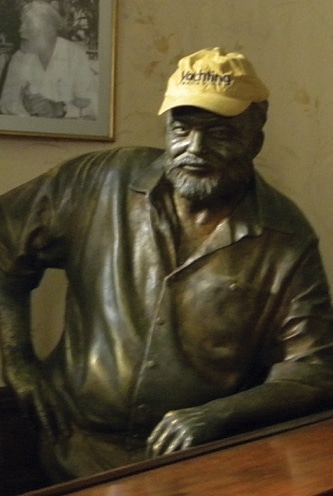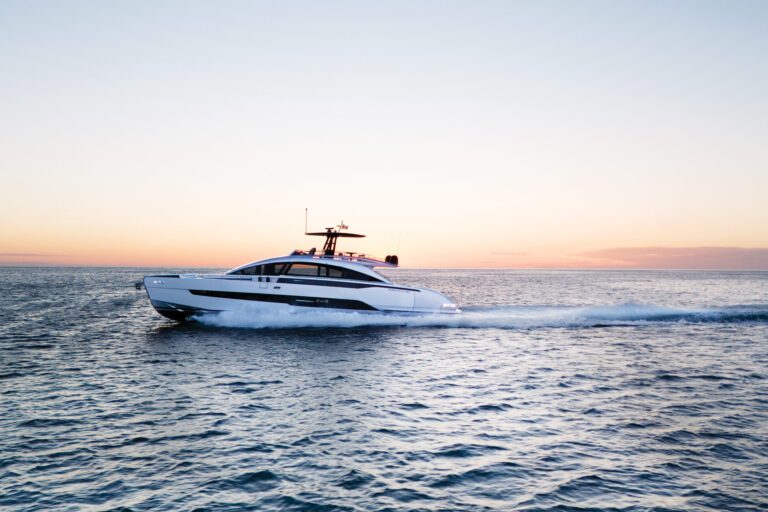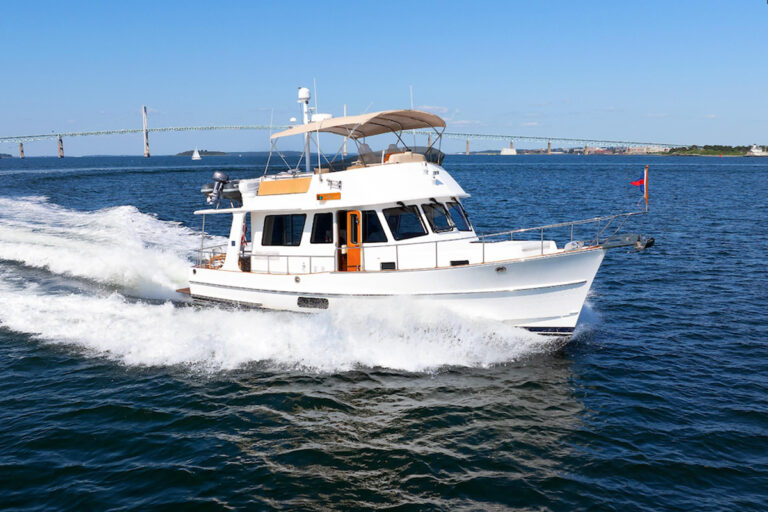
ytgsep15cuba525.jpg
The 1958 Oldsmobile rattled and roared down the Malecon, Havana’s broad and breezy seaside avenue. Vintage “Happy Days” perhaps, but I couldn’t help thinking seen better as I clung to the armrest. Nor was that the sound of Detroit iron firing beneath the hood. The cabbie says it’s a Czechoslovakian truck engine, a diesel that he’d grafted onto the GM frame to keep his clunker on the road. Forced improvisation keeps many of Cuba’s 60,000 classic american cars running.
The same circumstances that have made Havana a giant open-air automobile museum-50 years of standoff with the United States-have also preserved something undeniably important to the future of yachting: Most of Cuba’s 3,000 miles of coastline are barely touched by development, and we may soon be able to visit all of it.
Imagine a coast far greater than the distance from Bar Harbor to Miami, with scores of protected bays, hundreds of anchorages, and thousands of islands. Now imagine that this rich tropical cruising ground (which, by the way, teems with fish and lobster) has only 15 marinas for transient vessels. You have not only imagined the Cuban coast as it is today, but you have a pretty good picture of what the entire Caribbean looked like prior to 1960.
By the time fiberglass boats put middle-class America on the water, Fidel Castro had already mounted the Cuban Revolution. Successive U.S. administrations, with varying degrees of enthusiasm, have effectively banned American citizens from visiting Cuba, so Americans took their yachts and spread their dollars among all the islands except the big one nearby.
But Cuba’s coast has a natural advantage over the rest of the Caribbean. Would-be circumnavigators of Cuba can use sheltered “inside” routes for much of the way. Names such as “the gardens of the Queen” and “the twelve-League Labyrinth” hint at the beauty of these protective archipelagos and fringing reefs.
Journalists are exempt from the travel ban, and my Oldsmobile ride down the Malecon was part of Yachting’s visit to Havana this summer to get a handle on what kind of marine infrastructure awaits visiting American cruisers once the ban is lifted.

| | |
There is a growing agreement among leaders in both political parties that the Cuban Embargo has outlived whatever purpose it once had. The most important lesson I took home from Havana is that Cuban leaders take “nautical tourism” very seriously and would welcome American boaters. Their challenge, given chronic economic problems, is getting the money to carry out the ambitious marina development initiatives currently on the drawing boards.
According to Commodore Jose Miguel D’az Escrich of the Hemingway International Yacht Club in Havana, during the 10-year “thaw” in the travel ban-prior to the administration of George W. Bush-70 percent of the more than 2,500 foreign yachts that annually visited Cuba flew the Stars and Stripes. After the Bush administration cracked down in February 2004, the number of foreign yachts dropped dramatically. Not only did this reduce cash that could have flowed into infrastructure accounts, it discouraged foreign investors and marina developers.

| | |
Notwithstanding their diplomatic and trade relations with the rest of the world, the likelihood of restoring normal ties to the U.S. makes Cuba’s other tourism-dependent neighbors nervous. The cars, cigars, and arts culture-even the billboard communism-stoke American fascination with Cuba. Escrich says he expects more than 60,000 boats to visit during the first year after the ban is lifted. That’s a lot of boats to put into 789 slips island-wide.
Cuba has plans for 37 new or expanded transient marinas. The good news: Even if every one of these projects comes to fruition, the coast will continue to include vast areas of undeveloped mangroves and beaches, and thousands of remote cays. Well-protected bays will continue to be surrounded almost entirely by pasture and woodlands. Cuba has too much coast to ruin quickly.
Also, the slip shortage may be less dire than the numbers suggest, simply because many yachtsmen may be interested only in Havana-satisfied to make a quick sortie across the Gulf Stream, do a little fishing, explore the city, then head back to Florida. A 25-minute cab ride from downtown is Hemingway International Marina, a decent facility on the west side of the Cuban capital offering roughly 400 side-tie berths and with facilities for several 200-footers-a length limitation that’s naturally imposed by a turn after the entrance channel. Escrich said there is a major plan to redevelop the entire facility into a hotel-marina destination with the help of a foreign partner; part of that plan would make it easier for big yachts to enter and exit the facility. There are probably 10 or 12 other berths for megayachts in all of Cuba, excluding shipyards and commercial docks.
Another destination close to Florida is Varadero, a sprawling resort town on a long peninsula about 80 miles east of Havana. Two additional marinas for transients that are now undergoing major redevelopment. When finished, Varadero will be able to accommodate more boats than Marina Gaviota, currently the biggest in the Caribbean. Varadero will have 1,200 slips, including berths for six megayachts over 195 feet. Escrich said the goal was to have the first phase of the marina project-400 berths at floating docks-ready by late 2010, with all 1,200 slips and facilities in place in three years. The marina’s boatyard has a 100-ton lift already in use. Also open for business is the marina’s new waterfront restaurant, Kike-Keho, already one of Cuba’s finest.
At Peninsula Varadero’s other extreme is the Marina Darsena, which has plans to increase its capacity from 104 to 500 slips in three phases. Escrich says his job is to find foreign investors willing to provide the $11 million needed to make the project happen.
“I know some yachtsmen do not like the beach-resort nature of Varadero, but besides restaurants and nightlife, and a golf course, the area is a gateway to very unspoiled cruising among numerous nearby cays,” Escrich says. He is referring to Cardenas Bay and Santa Clara Bay, which together form one of those protected inside passages.
Escrich and a working group of Cuban officials, who meet regularly to discuss nautical tourism, are sensibly concentrating first on marine infrastructure in those destinations closest to the United States, as well as general issues such as recreational fishing permits and Cuba’s onerous port-clearance procedures. As a result, many Cuban marina plans are tentative, having been hatched years ago and then set aside-but two of these old initiatives look promising.
Baracoa is the easternmost city on the north coast of Cuba, and the oldest. It used to be a port of entry, but foreign boats approaching from Puerto Rico are now discouraged from entering the harbor and told they must continue on to Puerto Vita, about 100 nautical miles further west. If drawings that I saw for a 55-slip marina on Baracoa’s commercial waterfront are any indication, good changes are afoot. I visited Baracoa in 2006 and found it to be a lush and beautiful corner of the planet.
And lastly there is Havana harbor itself. This superb pocket bay is closed to recreational traffic; its shore is dedicated almost entirely to servicing oil tankers, cargo ships, and fishing boats. That, too, is expected to change. Cuba’s leaders recognize that the highest and best use for the harbor is as a tourist port. Step by step, and using investment dollars from the Middle East, they are moving the harbor’s industrial components to the nearby port of Mariel.

| | |
Havana, with two million people, is undoubtedly one of the greatest cities on earth, and by the time most people see it, much of its architecturally splendid Colonial Zone will have been restored, thanks to grants from European governments. No one who has been there doubts that Cuba’s capital will put all other tropical cruise ship destinations to shame. So, Havana’s planners have assigned top priority to the creation of berths for the behemoth liners-a mixed blessing, but a blessing nonetheless, because the renovations will include a marina component for foreign yachts, according to Escrich. Once the travel ban is lifted, cruise ships, along with high-speed ferries, are expected to come almost immediately. A marina can’t be too far behind.
As environmental restrictions, diminishing waterfront access, and rising costs dampen our enjoyment of the waterways in America’s warmest states, we can look hopefully to Cuba. A couple roll-call votes and a stroke of the presidential pen may soon give Americans a new reason to buy a yacht or use the one they have. Credit Cuba for its effort-however imperfect and underfunded-to welcome us as friends to the other side of the Florida Straits.





